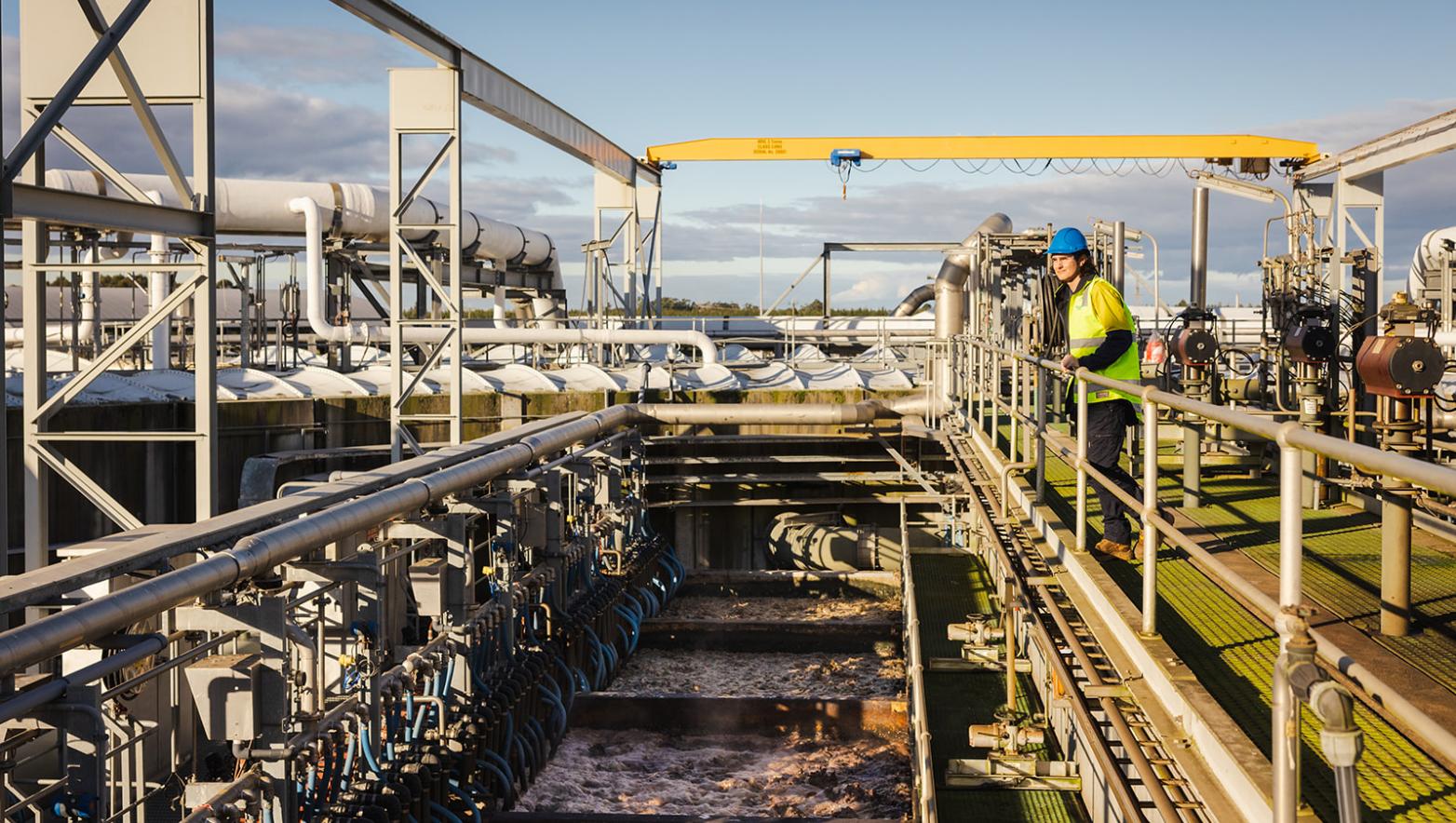Jump to topic
What is wastewater?
Wastewater is also known as sewage. It is made up of about 99% water and 1% waste products. An average household makes between 200 and 250 litres of wastewater each day. There are two types of wastewater - domestic and industrial.
Domestic wastewater is water from toilets, baths, showers, sinks, washing machines and dishwashers. This wastewater includes things like food scraps, human waste and detergents.
Industrial wastewater is any liquid waste generated by a business. This wastewater can include fats, oils, grease, process waste waters and food preparation waste.

Wastewater systems
Wastewater systems are made up of three parts:
- Property connections – these are the pipes that carry wastewater from each house, shop or building to the wastewater mains.
- Sewerage network – these are the sewer mains that transport the wastewater to treatment facilities. We try to transport most sewage by using gravity, but there are times when we have to build pumping stations to push sewage through the pipes.
- Wastewater treatment plants - this is where we use mechanical, chemical and biological processes to treat the contaminants in the sewage. We have 14 of these plants.
Just as we test the water we send to customers, we also test wastewater once it has been through the treatment process. It must meet standards set by the Environment Protection Authority (EPA) before it is irrigated on to pasture or released into waterways.
Wastewater treatment process
Wastewater is treated in stages at our treatment plants. Most wastewater treatment plants use a three-step process:
- Screens and grit systems remove large solids, grits and oils from the wastewater before it enters the treatment plant.
- Bacteria helps break down organic material into other forms which can then be easily separated into solids or clear liquid.
- The third stage uses filters and disinfectant to reduce the bacteria in the wastewater.
Once wastewater has been treated it is released to the environment via waterways, irrigation to land, or to the ocean via outfall pipes. All wastewater that is released must comply with Environment Protection Authority standards.
Wastewater and waterway mixing zones
When treated wastewater is released to a waterway, it mixes with the natural stream flows in the waterway. This is called a mixing zone.
According to EPA Victoria guidance, a mixing zone is an area within a waterway where water quality objectives may not be met due to the discharge of treated wastewater.
Although our wastewater is treated to a very high standard, it’s recommended that people, pets and livestock avoid direct contact with any water in the mixing zone.
We regularly monitor the quality of the treated wastewater that we discharge as well as in the mixing zone. We’ll communicate with downstream stakeholders if the treated wastewater that we discharge is not compliant with EPA Victoria guidelines.
We’ve installed signs along waterways where mixing zones exist to let the public know that treated wastewater is present.
Facts and stats
- We have 14 wastewater treatment plants and two ocean outfalls:
- Drouin
- Warragul
- Neerim Sth
- Willow Grove
- Rawson
- Moe
- Morwell
- Mirboo North
- Gippsland Water Factory
- Heyfield
- Maffra
- Stratford
- Seaspray
- Sale
- the Regional Outflall System and
- the Saline Water Outfall Pipeline.
- There are over 68,000 customers connected to our sewerage system.
- We treat over 26,000 million litres of wastewater each year.
- We maintain over 1,700 kilometres of sewer mains.
